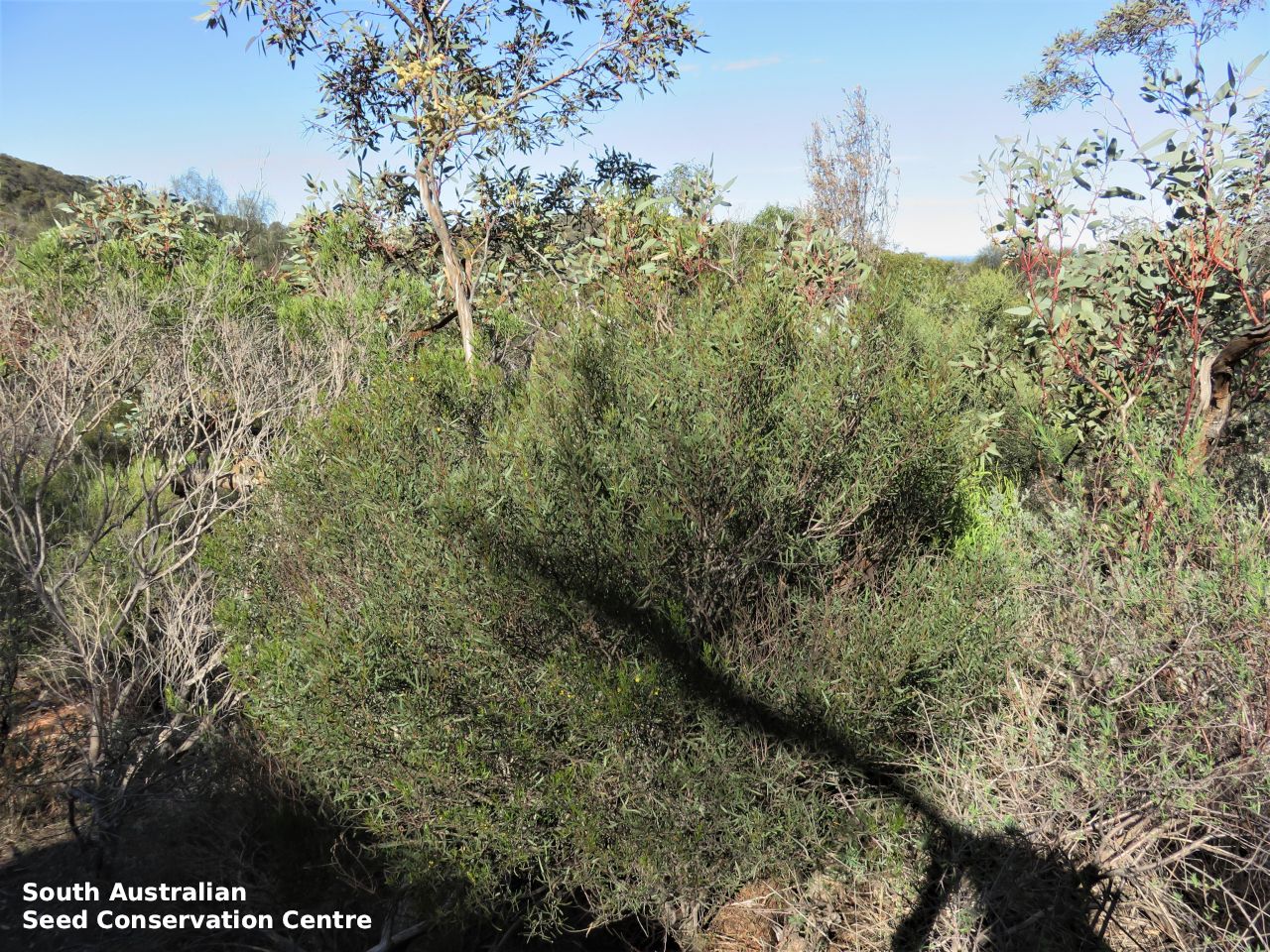
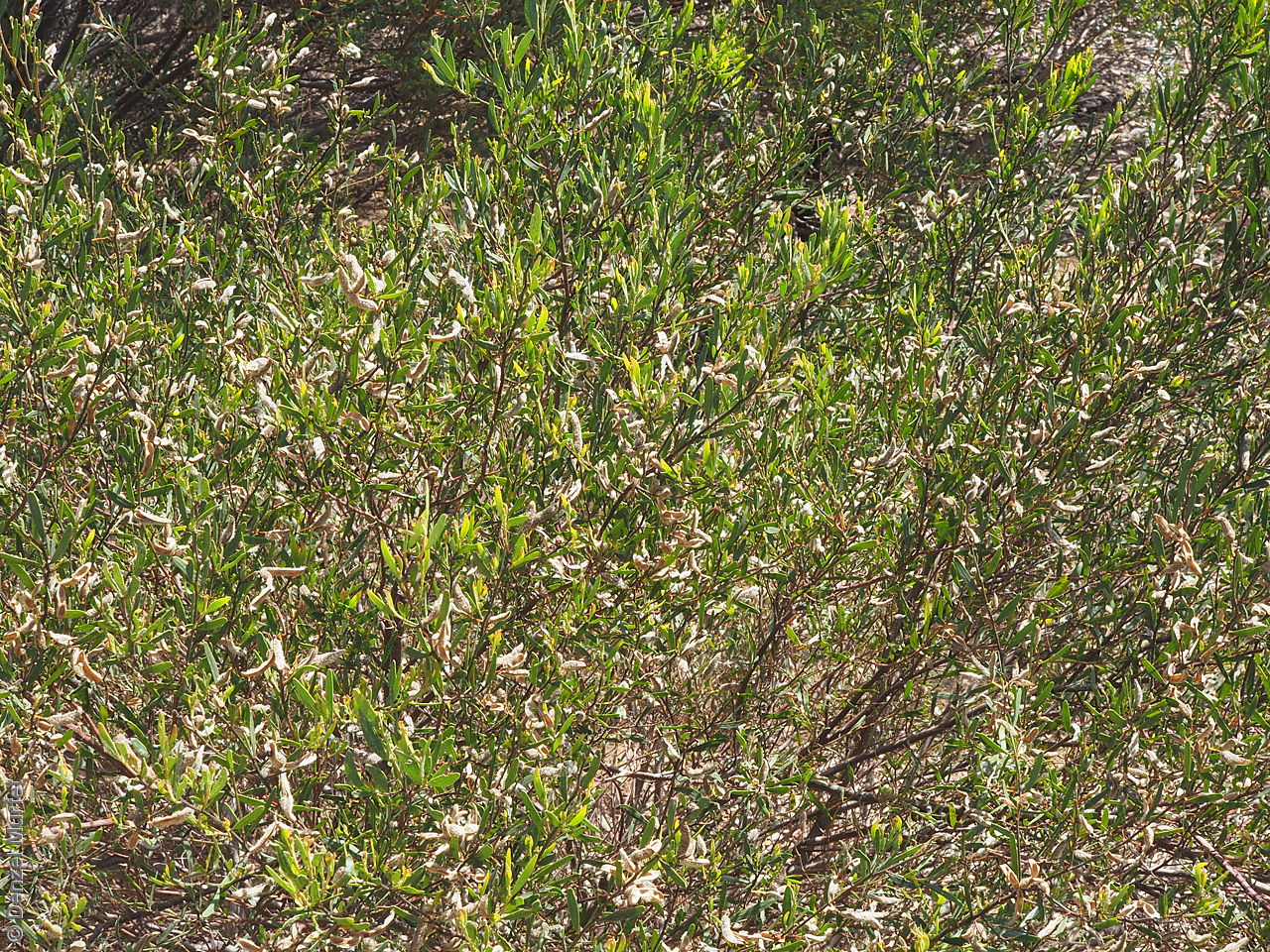
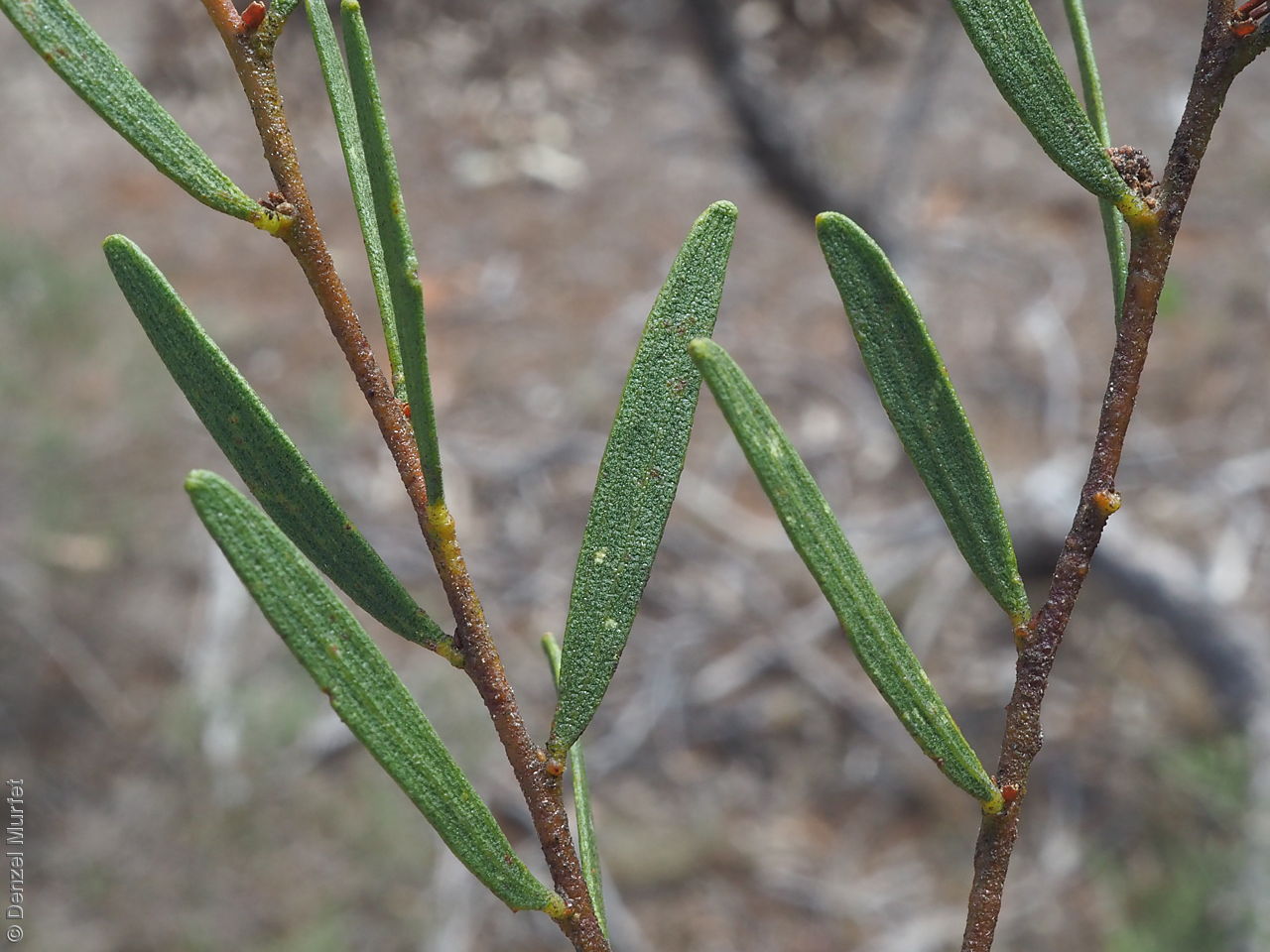
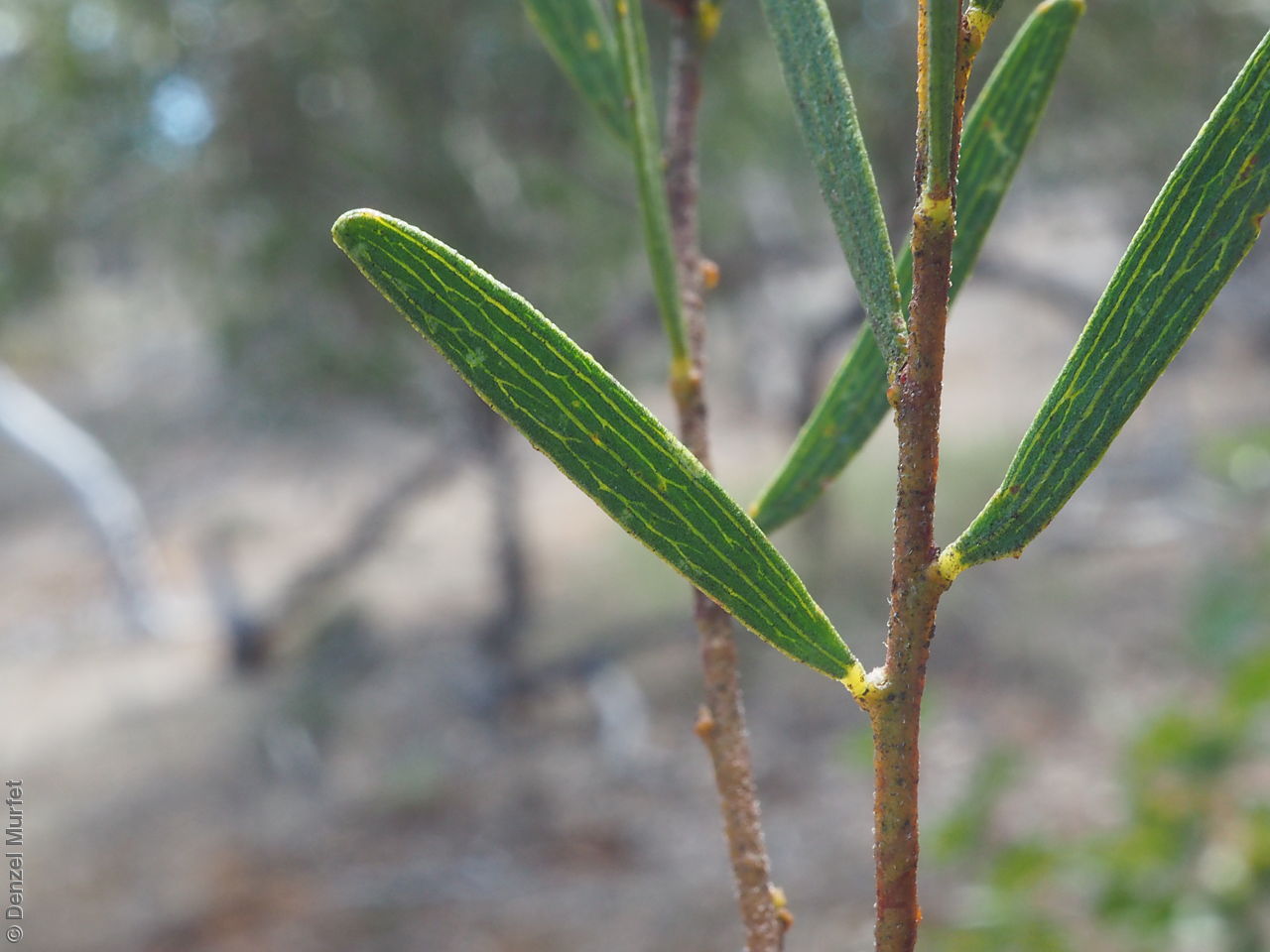

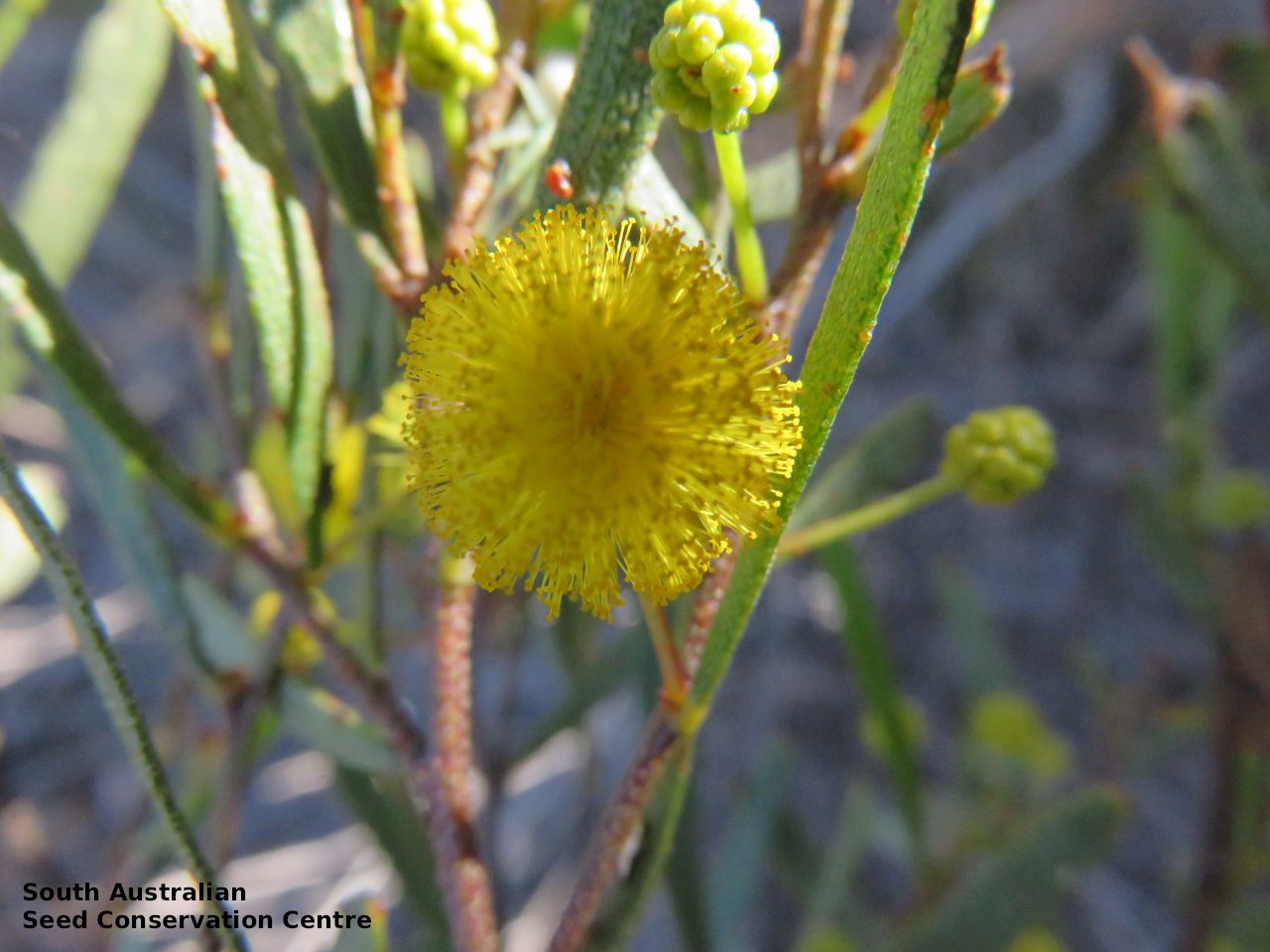

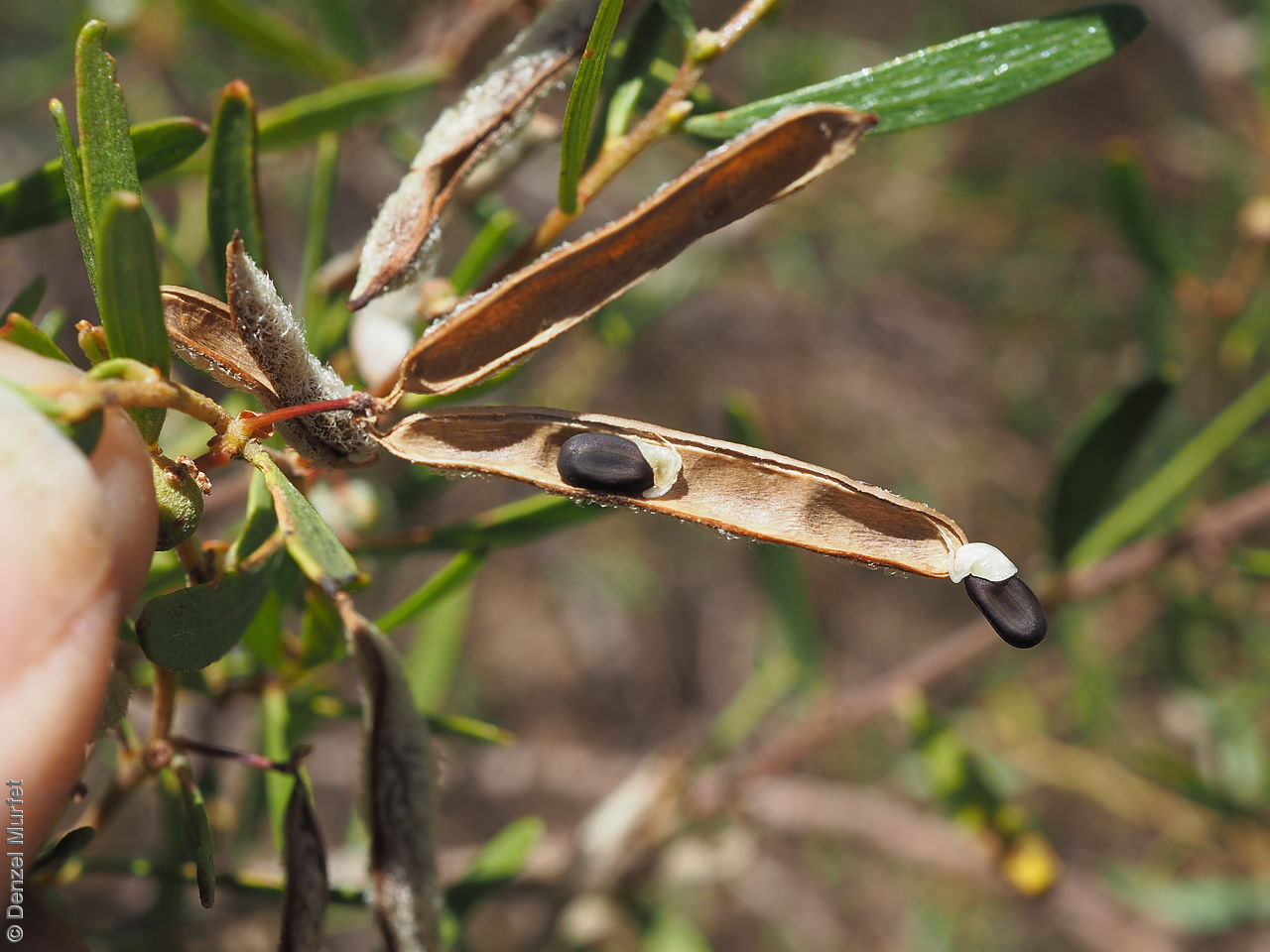
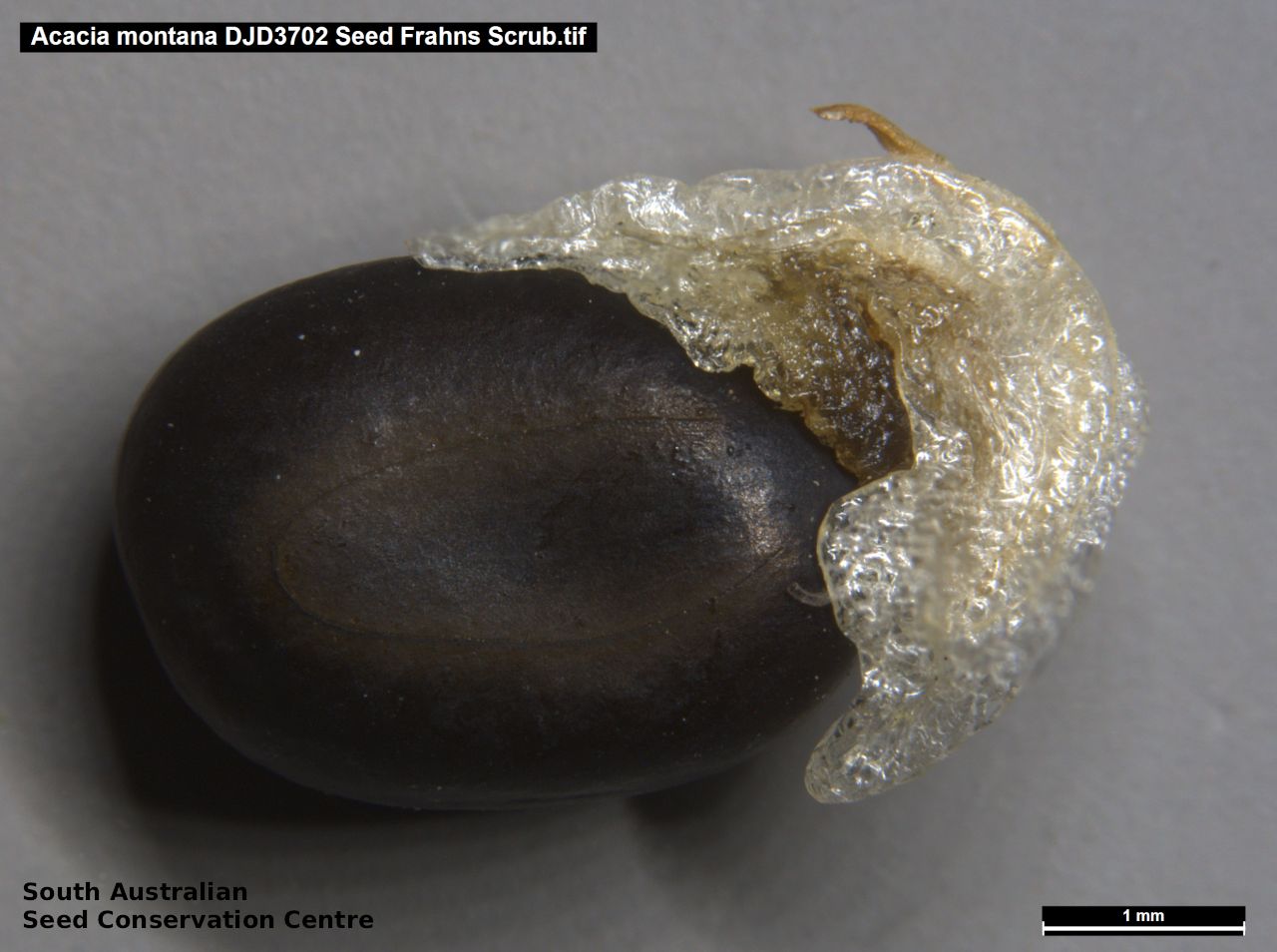
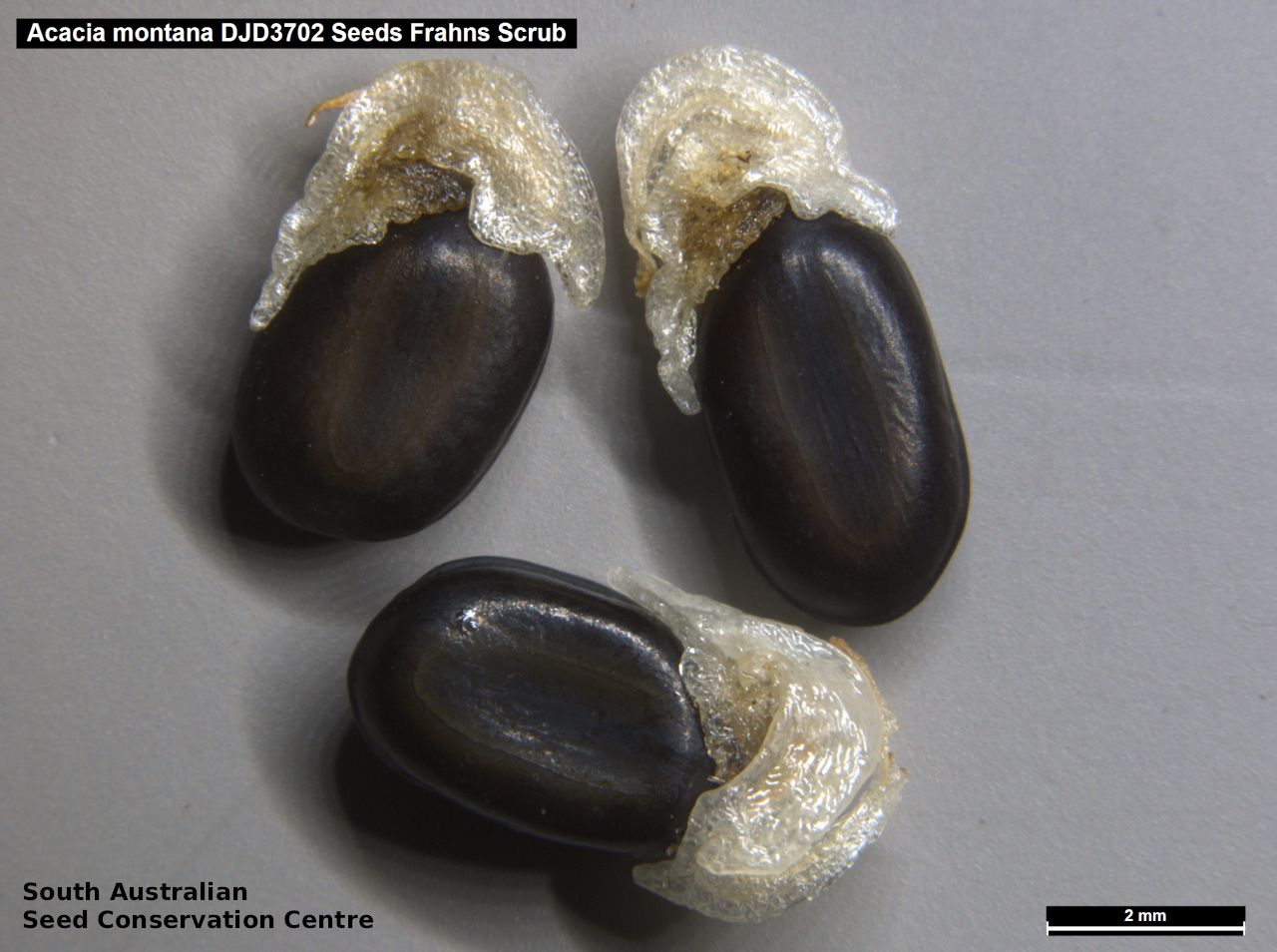

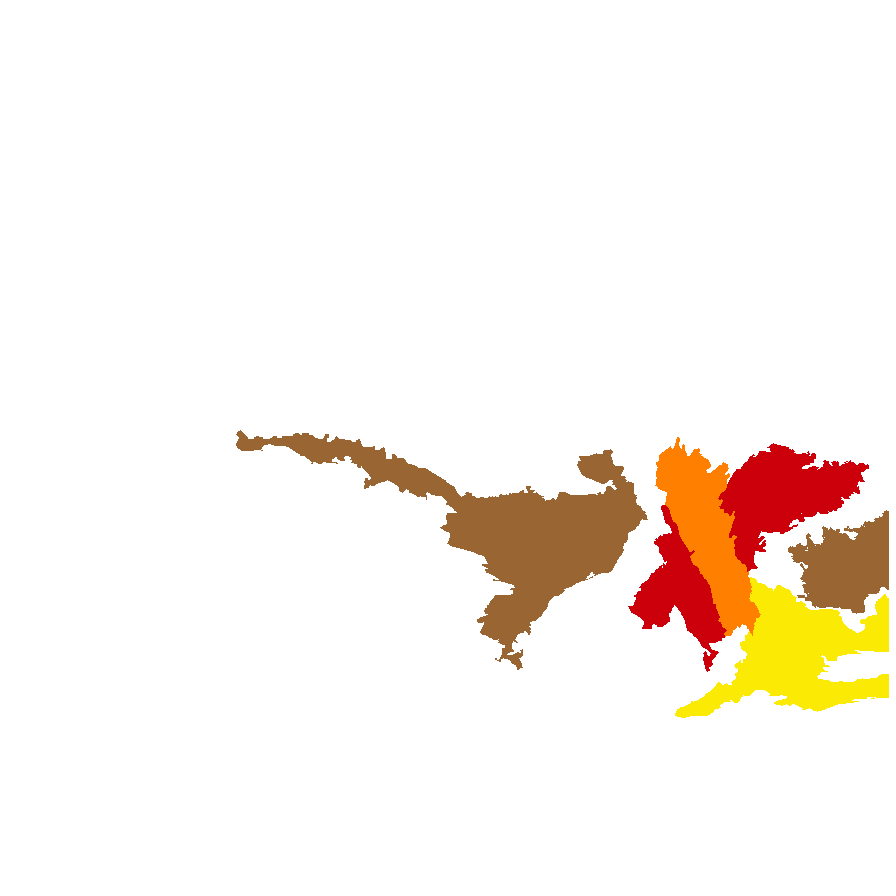
Botanical art
Prior names
Acacia montana var. psilocarpa
Racosperma montanum
Acacia clavata
Etymology
Acacia from the Greek 'akakia' and derived from 'ake' or 'akis' meaning a sharp point or thorn and 'akazo' meaning to sharpen. Dioscorides, the Greek physician and botanist used the word in the 1st century AD for the Egyptian thorn tree, Acacia arabica. Montana from the Latin 'montanus' meaning growing on mountains, may refer to the habitat from which the type specimen was collected.
Distribution and status
Found on eastern Eyre Peninsula, southern Flinders Ranges, northern Mount Lofty Ranges and the lower Murray region in South Australia, growing in open scrub on hard alkaline red duplex and grey-brown calcareous loamy soils Also found in Queensland, New South Wales and Victoria. Native. Rare in South Australia. Rare in Queensland. Common in the other States.
Herbarium regions: Eyre Peninsula, Northern Lofty, Murray, South Eastern
NRM regions: Eyre Peninsula, Northern and Yorke, South Australian Murray-Darling Basin
AVH map: SA distribution map (external link)
Plant description
Viscid, bushy, spreading shrubs to 3.5 m high, sometimes having a small tree-like, rather open, habit with a short trunk. Branchlets slightly angular, striate, finely pubescent but becoming almost glabrous; bark reddish-brown. Leaves narrowly oblong to 4 cm long and 7 mm broad; viscid with 2 equally prominent longitudinal veins with fine reticulate veins between; apex obtuse with a small, brownish, slightly raised and sometimes oblique gland, with a small obscure second gland on the upper margin near the base. Flower-spike simple and axillary, usually twin with globular, mid-yellow flower-heads. Seeds longitudinal in pod; funicle with 2-3 folds thickening into a cup-shaped aril. Flowering between August and September. Fruits are brown, linear pod to 50 mm long and 4 mm wide, straight or curved, densely covered with white, woolly hairs; margins slightly constricted between seeds. Seeds are hard black oblong seed to 6 mm along and 2.5 mm wide. Seed embryo type is investing.
Seed collection and propagation
Collect seeds between November and December. Collect mature pods that are turning brown, with hard, dark seeds inside. Place the pods in a tray and leave to dry for 1-2 weeks or until the pods begin to split. Then rub the dried pods to dislodge the seeds. Use a sieve to separate any unwanted material. Store the seeds with a desiccant such as dried silica beads or dry rice, in an air tight container in a cool and dry place. This species has physical dormancy that needs to be overcome for the seed to germinate (e.g. nicking or softening the seed coat).
| Location | No. of seeds (weight grams) | Number of plants | Date collected | Collection number Collection location | Date stored | % Viability | Storage temperature |
|---|---|---|---|---|---|---|---|
| MSB | 1,100 (12.97 g) | 10 | 26-Dec-2006 | DJD765 Murray | |||
| BGA | 5,800 (100.64 g) | 28-Dec-2010 | D281210MU Murray | 1-Jan-2016 | 80% | -18°C | |
| BGA | 9,900 (150.26 g) | 3-Dec-2007 | AJ03127NL Northern Lofty | 1-Jan-2016 | 85% | -18°C | |
| BGA | 3,300 (41.52 g) | 6 | 6-Dec-2017 | DJD3702 Murray | 30-Jun-2018 | 90% | -18°C |
| BGA | 3,850 (39.33 g) | 50+ | 6-Dec-2017 | DJD3700 Murray | 30-Jun-2018 | 40% | -18°C |
Number of plants: This is the number of plants from which the seeds were collected.
Collection location: The Herbarium of South Australia's region name.
% Viability: Percentage of filled healthy seeds determined by a cut test or x-ray.